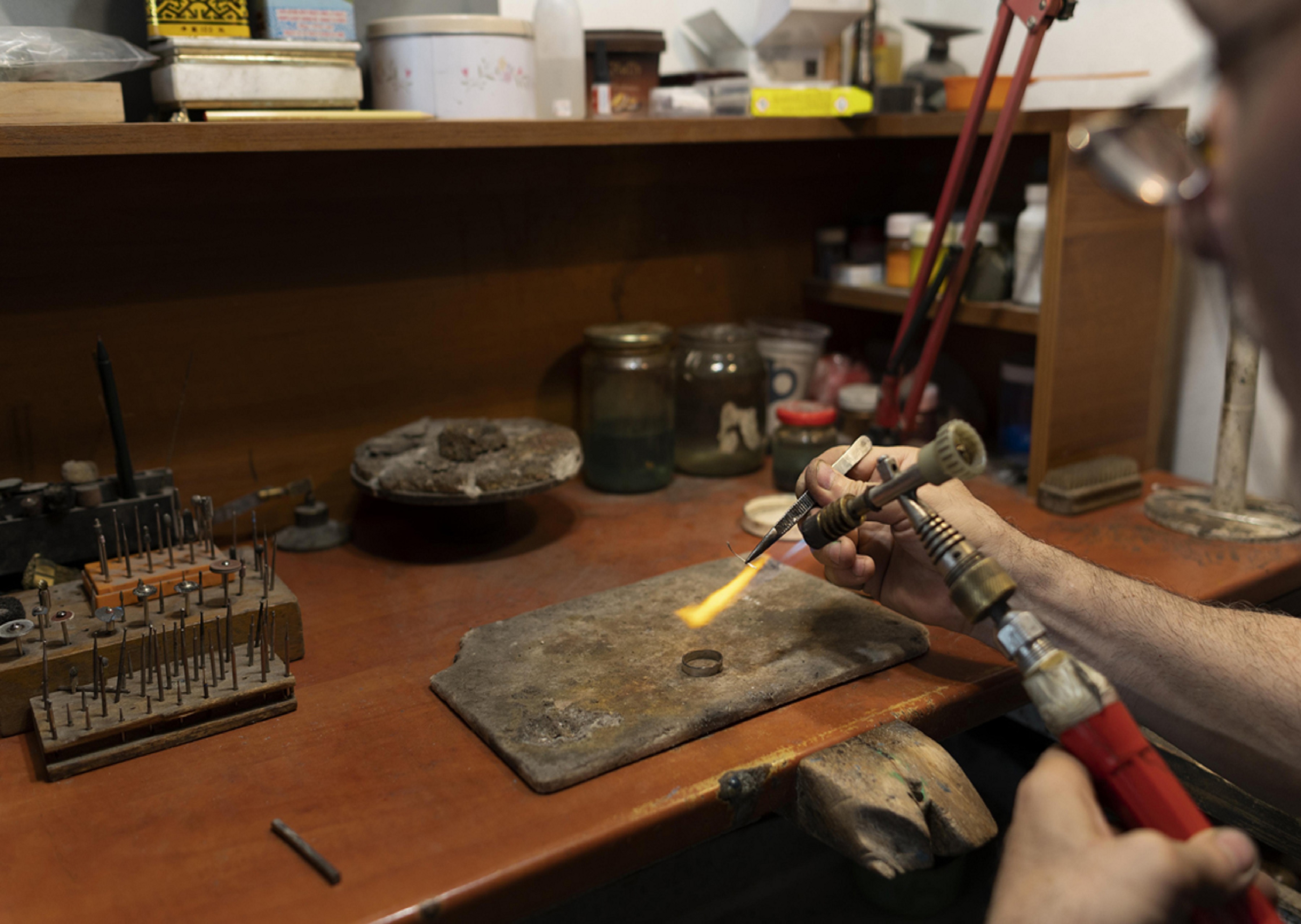07 July
2021

Hallmarking is the accurate determination and official recording of the proportionate content of precious metal in the jewellery/artefacts or bullion/coins. Hallmarking Scheme is currently voluntary. However, Quality control order for mandatory hallmarking of gold jewellery/artefacts has been issued on 15 Jan 2020 by the Govt. of India. Mandatory hallmarking of gold jewellery/artefacts shall come into force with effect from 01 June 2021.
Hallmarks are thus official marks used in many countries as a guarantee of purity or fineness of precious metal articles. The principle objectives of the Hallmarking Scheme are to protect the public against adulteration and to obligate manufacturers to maintain legal standards of fineness. In India, at present two precious metals namely gold and silver have been brought under the purview of Hallmarking.
Mandatory Gold Hallmarking : What Experts Say About New Law Related to Yellow Metal.
Objectives Behind Instituting Hallmarking Scheme:
- To protect consumer against victimization due to irregular gold or silver quality.
- Develop India as a leading gold market centre in the World and develop export competitiveness.
- The principle objective of the Hallmarking Scheme are to protect the public against adulteration and to obligate manufacturers to maintain legal standards of fineness.
Appropriate Stock Means:
- To understand the need for a particular period of time: The preference of Indian consumers for jewellery products is based on long-entrenched cultural drivers. However, a jwellery software can help you understand the fluctuations in demand over time.
- To understand the most saleable items in the current scenario: A jwellery management software stocks data about your inventory, you can easily figure out the most sold products and thus focus on them.
- To mark the vendors whose products are purchased by your customers: This software also allows you to filter the vendors that sell the most to your customer, based on that data you can form a strategy to increase sales margin.
The Indian Standards Of Hallmarking are:
- IS 1417: 2016 Gold and Gold Alloys, Jewellery/Artefacts-Fineness and Marking- Specification.
- IS 2112:2014 Silver and Silver Alloys, Jewellery/Artefacts-Fineness and Marking- Specification
- IS 15820: 2009 General Requirements for establishment and operation of Assaying and operation of Assaying and Hallmarking centres.
- IS 1418: 2009 Determination of gold in gold bullion, gold alloys and gold jewellery/artefacts - cupellation ( Fire Assay) Method.
- IS 2113: 2014 Assaying Silver in Silver and Silver Alloys-Methods.
The grades that are permitted for hallmarking of Gold Jewellery:
IS 1417:2016 permits Gold jewellery/artefacts of 14 carat, 18 carat and 22 carat to be hallmarked and sold. However an amendment to the Indian Standard is being issued which would permit Hallmarking of six caratages of gold jewellery/ artefacts, viz. 14, 18, 20, 22, 23 and 24 carats.
How Will be the Jewellers Get Benefitted?
- It will provide clear indication of his/her capability.
- Strong evidence of commitment to quality and assurance of consistency in purity and quality of gold or silver jewellery
Who Need to Get the Jewellery Hallmarked?
In the chain of Manufacturer, Wholesaler, Distributor and Retailer, the responsibility to get the article Hallmarked is on the one who makes the first point of sale. Thus hallmarking has to be done only once in the entire chain and it has to be done by the one who has made the first sale which may be Manufacturer or Wholesaler or Distributor or Retailer.
Necessity of Taking Authentic Bills/ Invoice for the Hallmarked Article From the Retail Jeweller:
- It is necessary to take authentic bills/invoice of the hallmarked article from retailer/jeweller. It is necessary for any dispute/misuse/complaint redressal.
- The jewellery imported to India can be sold by registered jeweller after it is assayed and hallmarked by a BIS recognised hallmarking centre.
Following Marks on the Hallmarked Jewellery are Mandatory:
- BIS Standard Mark ( BIS Logo)
- Purity in carat and fineness
- Six digit UID number
- Beside these, the manufacturer or jeweller may put his/their mark on hallmarked Jewellery/artefacts. As per BIS hallmarking regulation.
Under Mandatory Hallmarking Category:
- If an alloy is made by mixing gold with one or more metals, then the article will be covered under mandatory hallmarking.
- White gold alloy of 14, 18 and 22 carats is covered under mandatory hallmarking.
- The jeweller can melt the old jewellery to new and get it marked with a new six-digit code under the new hallmarking system before selling the jewellery.
- It is not necessary to re-hallmark the already hallmarked jewellery after the introduction of new hallmark with six-digit code.
The Details Jeweller has to Mention In the Bill Issued to the Purchaser:
- Description of each article.
- Net weight of precious metal.
- Purity in carat and fineness.
- IHallmarking charges need to be mentioned in the bill or invoice of sale of hallmarked precious metal articles.
It is also mentioned that “the consumer can get the purity of the hallmarked jewellery/artefacts verified from any of the BIS recognized A&H centre (Assaying & Hallmarking centre).
Ready to weave your vision into digital reality
Let’s craft your digital masterpiece together
Get Started Free


Leave a Comment